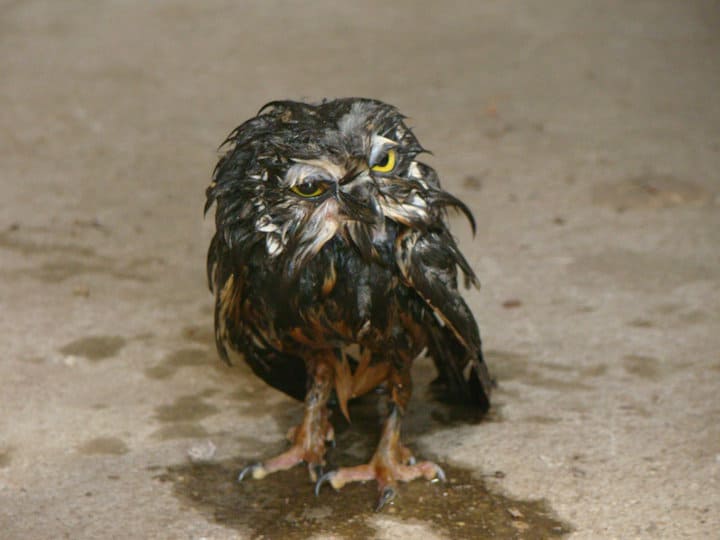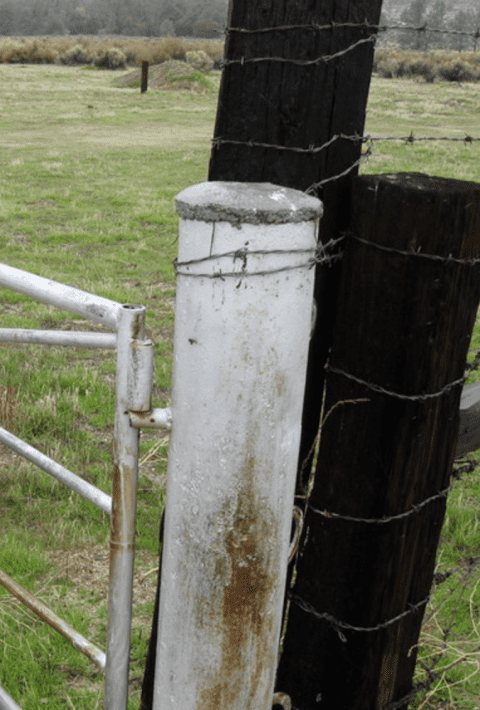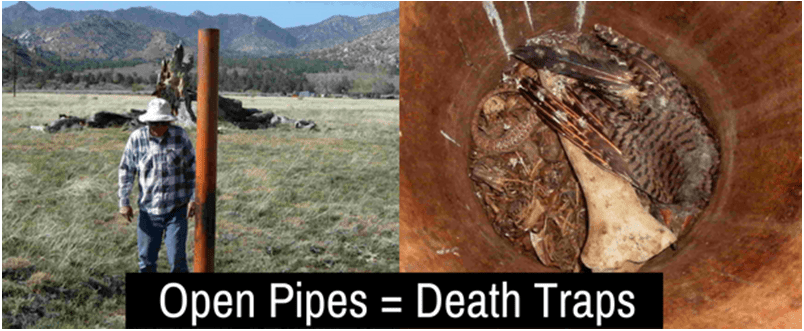Birds face many threats to their survival throughout their delicate lives – from predators and disease to habitat destruction and extreme weather. But there is another deadly threat that can be found nearly everywhere birds and people live that hardly anyone, least of all birds, realizes is a problem. These overlooked but ubiquitous killers are open vertical pipes.

Open vertical pipes can be found almost everywhere – on homes, office buildings, construction sites, agricultural fields, mining operations, even on protected public lands. They can take the form of fence posts, sign posts, irrigation systems, survey markers, vents on buildings and even vault toilet ventilation ducts. Any open vertical pipe between one and 10 inches in diameter with smooth walls (such as PVC or metal) is basically a death trap where birds and other wildlife can become ensnared and perish.
People are largely unaware of the problem because unlike birds colliding into windows, buildings or other structures where bird bodies remain visible, birds trapped in pipes end up dying a slow death completely unnoticed in sewer systems, septic tanks, the bottom of pipes and other hidden locations.
However, as more biologists study this issue, the more the conservation community is becoming aware just how big a threat open pipes are for birds. Biologists now believe that open pipes trap and entomb millions of birds and other wildlife each year.
In May 2013, researchers studying open bollards and fence posts at Los Alamos National Laboratory in Northern New Mexico found that 27% of bollards and 11% of fence posts contained dead birds, mostly Western Bluebirds. Given the ubiquitous presence of open fence posts along rural highways in New Mexico, researchers estimate that these open posts are responsible for more than 13,000 bird deaths each year.

In 2009, staff members of Audubon California’s Kern River Preserve and Southern Sierra Research Station discovered a fallen irrigation standpipe that contained the remains of 231 dead birds! And Natural Resource Conservation Service (NRCS) field staff report that they have found dead birds in nearly every open pipe they have inspected.
The good news is that there are simple solutions to this deadly problem. Biologists recommend that land managers and building owners remove, cap, screen or fill in all open vertical pipes.
In southern Arizona, several groups are working to identify, mark and fill as many open-topped pipes as possible. Ian Murray, a conservation biologist with Pima County, reports that 119 open pipes were found last year on county open space preserve lands. Among the pipes that were inspected for bird remains, Murray reports finding a number of species including Burrowing Owl, Rock Wren, Black-tailed gnatcatchers, Black-throated Sparrows, Ash-throated flycatchers, Ladder-backed Woodpeckers, and Gila Woodpeckers.
“We know open-topped pipes are an extensive threat. But we also know the problem is easy to remedy. It’s just a matter of getting the word out,” said Murray. “In most cases, we are simply filling the open-topped pipes with rocks, which is a quick and easy way to prevent unnecessary bird deaths.”
Wildlife and natural resource agencies such as the U.S. Fish and Wildlife Service and NRCS, as well as bird conservation organizations such as Audubon California and the Teton Raptor Center have launched public education campaigns to raise awareness of this issue and provide strategies and tips for reducing wildlife deaths by open pipes.
Here at the SJV, we are also working to raise awareness about this silent killer within the bird conservation community. Won’t you please help us by sharing this story with your birder friends and colleagues, and by following us on Facebook and Twitter and sharing our posts on this important issue? Thank you!
Title photos courtesy of Audubon California.

